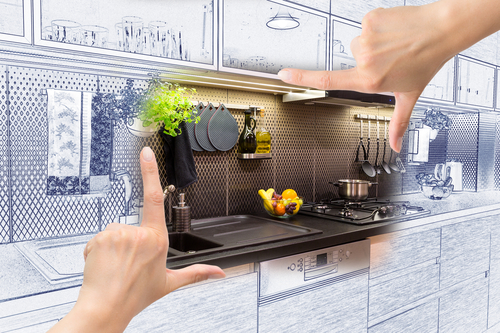
As a residential property manager, maximizing rental income and occupancy rates often means investing in periodic improvements to your property. But how do you juggle making the right upgrades and updates, while also ensuring an overall increase to your return on investment (ROI)? No matter your geography, there are several lower-cost ways to improve a property, whether for a stand-alone residence, or a multi-unit complex that can net you significant improvements to your profit margin.
Clean Before Replacing
It’s not uncommon for landlords to replace the carpeting and paint the interior of the entire unit between tenants. Though many times, this is simply not necessary. Since renters often see an apartment or rental unit as a temporary stop, their expectations aren’t as high as someone who is purchasing a house. Instead, remove scuff marks on walls with a Magic Eraser and a mixture of baking soda and warm water or use a solvent product such as Chomp.
When it comes to carpeting, as a general rule of thumb, your schedule for replacement should be every seven years. When you do need to replace it, choose carpeting with a longer life expectancy and stain-fighting abilities. In the interim, unless there is damage to the carpet, hire professional truck-mount carpet steam cleaners to thoroughly clean carpets between tenants.
Update the Kitchen
Potential renters notice the kitchen more than any other room, making it the best room in a property to update to maximize your ROI. Calculate your ROI based on your region and the degree of renovation you choose to complete.
If your cabinets are old and tired, instead of replacing them, consider cabinet refacing, which can be significantly cheaper than replacement or paint the cabinets with a high quality and stylish finish such as Annie Sloan Chalk Paint. Chalk paint is durable and comes in a variety of colors that can transform worn cabinets into modern ones. Countertops make a big difference too but choose a product that is inexpensive and durable yet looks like higher quality materials such as Formica. Many Formica options and similar laminate products look like granite or stone. Poured concrete counters are virtually maintenance-free but cost more in their initial installation.
Think Outside the Four Walls
The interior isn’t the only aspect of a property important to renters. The exterior is the first thing a renter sees, making the first impression. Consider options that you can feature as selling points that appeal to renters. For example, installing storm doors is an excellent way to reduce energy costs for either you, if your complex includes it in the rent, or to the renter if they are responsible for energy bills. A typical storm door will cost between $200 to $400 but the savings will far exceed the cost in no time.
Another low-cost feature to add that will wow potential renters is adding a security camera system. If you manage a stand-alone unit or a small complex, a subscription-based security system may not make sense financially. Instead, get a security camera system that can be installed easily and doesn’t require monthly fees, like one by Lorex. Additionally, a security camera system can help you monitor your property when you are away or if you don’t have onsite property management, reduce your insurance costs, and deter theft and vandalism. Be sure to include language in your rental agreements about penalties for damage or dismantling of a system.
Keep in mind, some renters can be hard on a property, so think of any improvements you perform as business decisions to sell a product which in this case is a house, not a home. This doesn’t mean doing shoddy work or using cheap materials, which can make renters think you don’t care about them or the property. Strike a sweet spot balance between cost and quality and your profit and loss statement will thank you for it.
